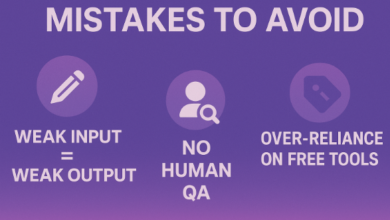
Shopify Web Development for SEO: How to Make Your Store Search Engine-Friendly
In today’s competitive eCommerce landscape, simply having a Shopify store isn’t enough. With thousands of online stores competing for attention, the real challenge lies in getting potential customers to find your store. This is where Search Engine Optimization (SEO) comes into play. SEO ensures your store ranks higher in search results, driving more organic traffic and potential buyers. But here’s the catch: optimizing your Shopify store isn’t just about adding keywords. It involves smart Shopify web development practices that make your site faster, more structured, and easier for search engines to crawl.
In this blog, we’ll explore how to combine Shopify web development techniques with SEO strategies to create a search engine-friendly store. Whether you’re a store owner, a developer, or a marketer, these tips will help you improve your store’s visibility and attract more qualified leads.
Why Shopify SEO Matters for Your Business?
Before diving into development techniques, it’s essential to understand why SEO is crucial for Shopify stores. A well-optimized store can:
- Increase visibility: Higher search rankings mean more people discover your products.
- Boost organic traffic: Unlike paid ads, organic traffic is free and sustainable.
- Enhance user experience: Good SEO focuses on both users and search engines.
- Improve sales conversions: More visibility + better UX = higher revenue potential.
For example, imagine two Shopify stores selling handmade candles. One has optimized product descriptions, clean code, and fast loading speeds. The other hasn’t been optimized at all. When a customer searches for “handmade soy candles,” the optimized store appears on the first page of Google, while the other is buried in search results. The result? The first store gets the sale.
1. Start with a Strong Site Structure
A clean and logical site structure is the foundation of Shopify SEO. Search engines need to crawl your store efficiently, and users should easily navigate it.
Tips for Building a Search-Friendly Structure:
- Use a simple hierarchy:
Organize your store into clear categories and subcategories. For instance:
Home > Collections > Product Pages. - Optimize URLs:
Shopify automatically generates URLs, but you can customize them. Use short, descriptive URLs like:
www.yourstore.com/collections/handmade-candles
instead of
www.yourstore.com/collections/product-1234. - Avoid duplicate content:
Duplicate product pages can confuse search engines. Use canonical tags to indicate the preferred version of a page. - Plan for growth:
Think about future product lines and create a structure that can scale.
Example: If you sell fitness apparel, you might structure your site like this:
Home > Men’s Apparel > Shirts > Performance Shirts.
This logical flow helps both customers and search engines understand your store.
2. Optimize Site Speed for Better Rankings
Website speed is a major Google ranking factor. Slow-loading stores lead to higher bounce rates and lower conversions. Shopify offers reliable hosting, but additional optimization steps are essential.
Speed Optimization Strategies:
- Compress images: Use tools like TinyPNG or Shopify apps to reduce image sizes without losing quality.
- Minimize apps and scripts: Too many apps can slow down your store. Remove unnecessary ones.
- Enable lazy loading: This loads images only when they’re visible to the user, improving speed.
- Use a lightweight theme: Avoid overly complex themes with heavy code.
- Check your store’s speed: Use Google PageSpeed Insights or Shopify’s built-in speed report.
Real-Life Scenario: A fashion store reduced its homepage image size by 40% and saw its load time drop from 5 seconds to 2.8 seconds. This improvement led to a 15% increase in conversions.
3. Leverage Shopify Web Development for SEO Enhancements
Good Shopify web development goes beyond aesthetics. It ensures your store is SEO-friendly at a technical level.
Technical SEO Best Practices:
- Clean, semantic code: Ensure the HTML structure is simple and organized. Use proper heading tags (H1, H2, H3) for product titles and content.
- Mobile-first design: Over 60% of eCommerce traffic comes from mobile. Shopify themes are mobile-friendly, but always test responsiveness.
- Schema markup: Add structured data to product pages to improve search engine understanding and enable rich snippets.
- Internal linking: Link related products and collections to guide users and spread SEO value.
- Secure site with HTTPS: Shopify provides SSL certificates, but ensure all URLs use HTTPS.
Example of Schema Usage: If you sell sneakers, schema markup can display product ratings and prices directly in search results, making your listing more attractive.
By focusing on these development aspects, you’ll create a solid SEO foundation for your Shopify store.
4. Optimize On-Page Elements for SEO
On-page optimization is where you fine-tune individual pages for search visibility. Shopify provides built-in fields for many of these elements.
4 Key On-Page Elements:
- Title tags and meta descriptions:
Write unique, descriptive titles for each product and collection. Include target keywords naturally.
Example: “Handmade Soy Candle – Lavender Scent | Your Store Name” - Product descriptions:
Avoid generic manufacturer descriptions. Write original, keyword-rich content that highlights benefits. - Alt text for images:
Describe images accurately to improve accessibility and help search engines understand visuals. - H1 and H2 tags:
Use one H1 tag per page (usually the product name). Organize additional content with H2 tags.
5. Improve User Experience for Higher Rankings
Search engines prioritize websites that offer excellent user experiences. A well-designed, easy-to-navigate store keeps visitors engaged and encourages conversions.
User Experience Tips:
- Simplify navigation menus:
Avoid clutter and focus on key categories. - Enable search functionality:
A search bar helps users find products quickly. - Offer clear calls-to-action (CTAs):
Buttons like “Add to Cart” or “Shop Now” should stand out. - Provide detailed product information:
Include sizing charts, reviews, and FAQs to reduce customer uncertainty.
Pro Tip: A smooth UX not only improves rankings but also builds customer trust, leading to repeat purchases.
6. Build a Content Strategy Around Your Store
Content marketing plays a vital role in Shopify SEO. Blogging and other content forms help you target additional keywords and provide value to your audience.
Content Ideas for Shopify Stores:
- Blog posts related to your niche
Example: “10 Ways to Decorate Your Home with Handmade Candles” - Buying guides and tutorials
- Customer stories or testimonials
- Seasonal gift guides
By regularly publishing high-quality content, you increase your chances of ranking for long-tail keywords and driving organic traffic. This is where enterprise SEO consulting can be valuable for larger stores looking to develop a robust content strategy across multiple markets.
7. Monitor and Measure Your SEO Performance
SEO isn’t a one-time task. It’s an ongoing process that requires regular monitoring and adjustments.
Tools for Tracking SEO:
- Google Analytics: Measure traffic, bounce rates, and conversions.
- Google Search Console: Track keyword performance and fix crawling issues.
- Shopify analytics: Monitor store-specific data like product views and sales.
Tip: Set clear SEO goals, such as increasing organic traffic by 20% in three months, and use these tools to track your progress.
8. Common Shopify SEO Mistakes to Avoid
Even experienced store owners make mistakes that hurt their SEO. Here are some pitfalls to watch out for:
- Ignoring mobile optimization
- Overusing keywords in titles and descriptions
- Forgetting to set up 301 redirects for deleted products
- Relying solely on paid ads instead of building organic traffic
- Neglecting technical issues like broken links or slow-loading pages
By avoiding these mistakes, you’ll set your store up for long-term success.
Conclusion: Building a Shopify Store That Search Engines Love
Creating a search engine-friendly Shopify store requires a balance of design, technical development, and content strategy. By focusing on clean site structure, fast loading times, on-page optimization, and an excellent user experience, you can dramatically improve your store’s visibility and organic traffic.
Remember, SEO is an ongoing journey. Regularly monitor your performance, adapt to search engine algorithm changes, and continue refining your strategy. For larger businesses, partnering with experts or exploring enterprise SEO consulting services can provide deeper insights and scalability.
By applying the strategies outlined in this guide, you’ll not only boost your search rankings but also create a better shopping experience for your customers — one that keeps them coming back for more.



